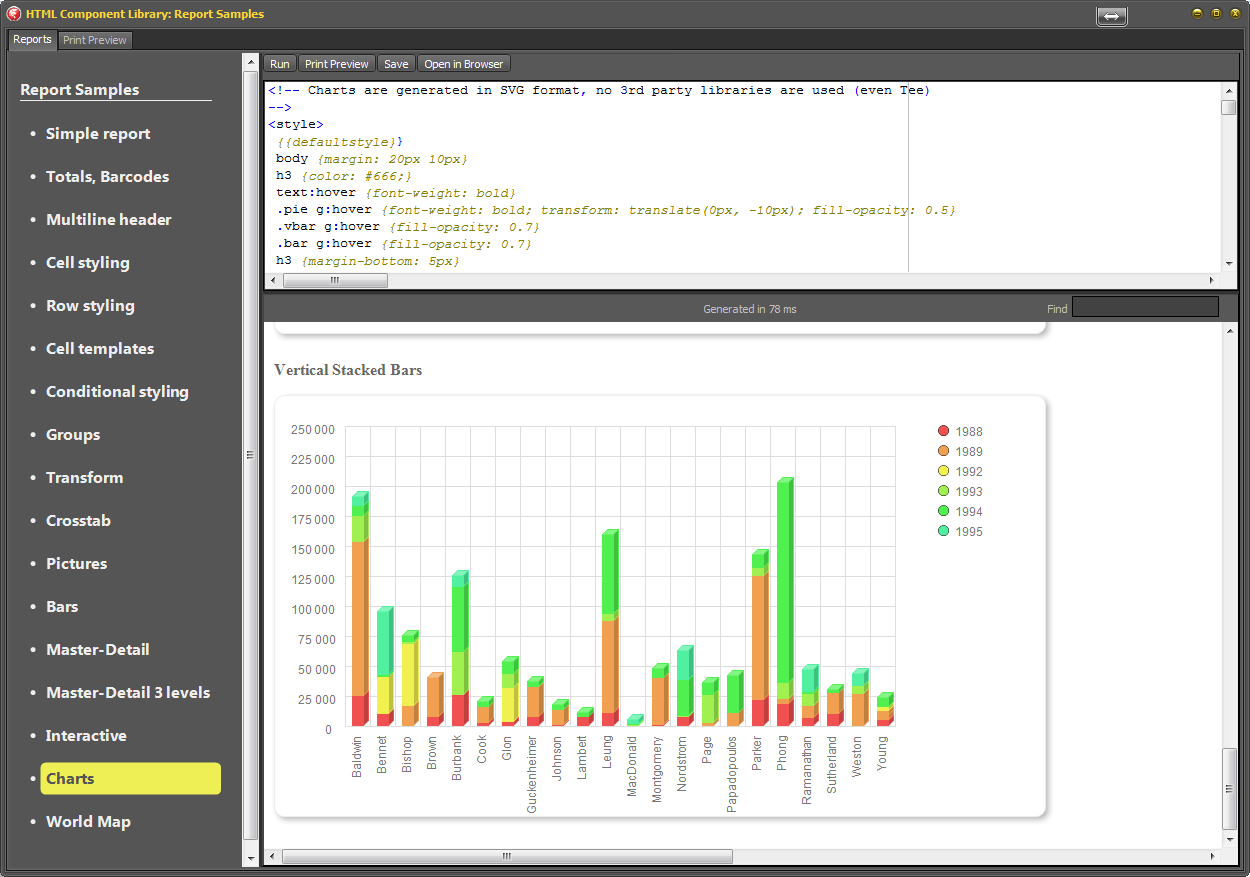HTML Report Library
Templates are simple HTML files containing special tags, and output is pure HTML suitable for displaying in any browser and sending by mail (all of the graphics are directly integrated into the text, so when sending mail you don't have to attach pictures separately).
HRL can be used in client applications to generate and view report inside the program, and in server applications or Web-servers. As a template language HRL uses widely known Mustache with some extensions.
Build-in powerful scripting and expression evaluation engine allow to implement complex data processing algorithms and encapsulate all logic inside report.
Library supports all versions of Delphi from Delphi 5 to Delphi 12 Athens, and also supports Unicode for old non-unicode versions of Delphi using widestring.
Supported platforms: VCL Win32/54, FMX Win32/64, MacOS (also Android and iOS, but without printing).
HRL fully supports Right-to-Left languages, including order of table columns and location of chart data.
HRL supports major data-access components (FireDac, IBX, UIB, DOA, Unidac). Adapters for other libraries could be implemented very simply and takes not more than 10 minutes.
HRL is totally based on HTML Component Library and includes full version of HCL, so HCL users with active subscription could upgrade to HTML Report Library paying only difference.
HTML Report Library Manual
HTML Report Library Online Manual
HTML Scripter Manual
Compiled demo (Win32)
Trial for Delphi 7 - 12 Athens
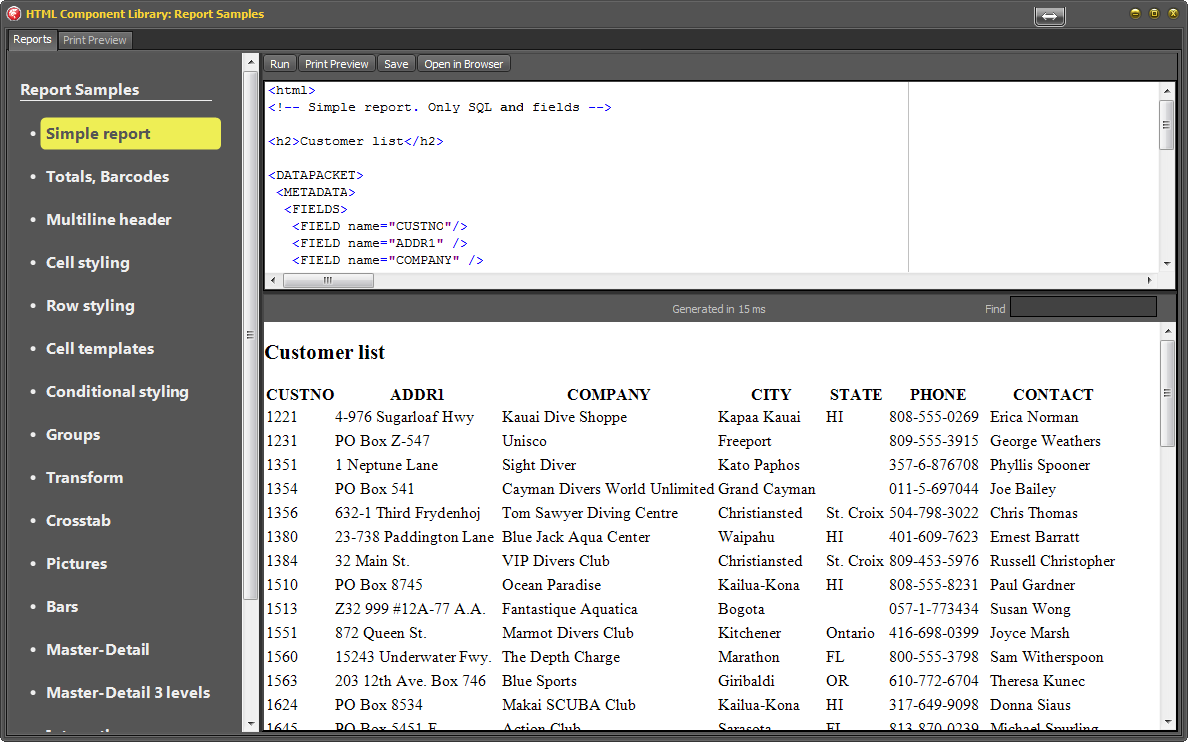
Overview
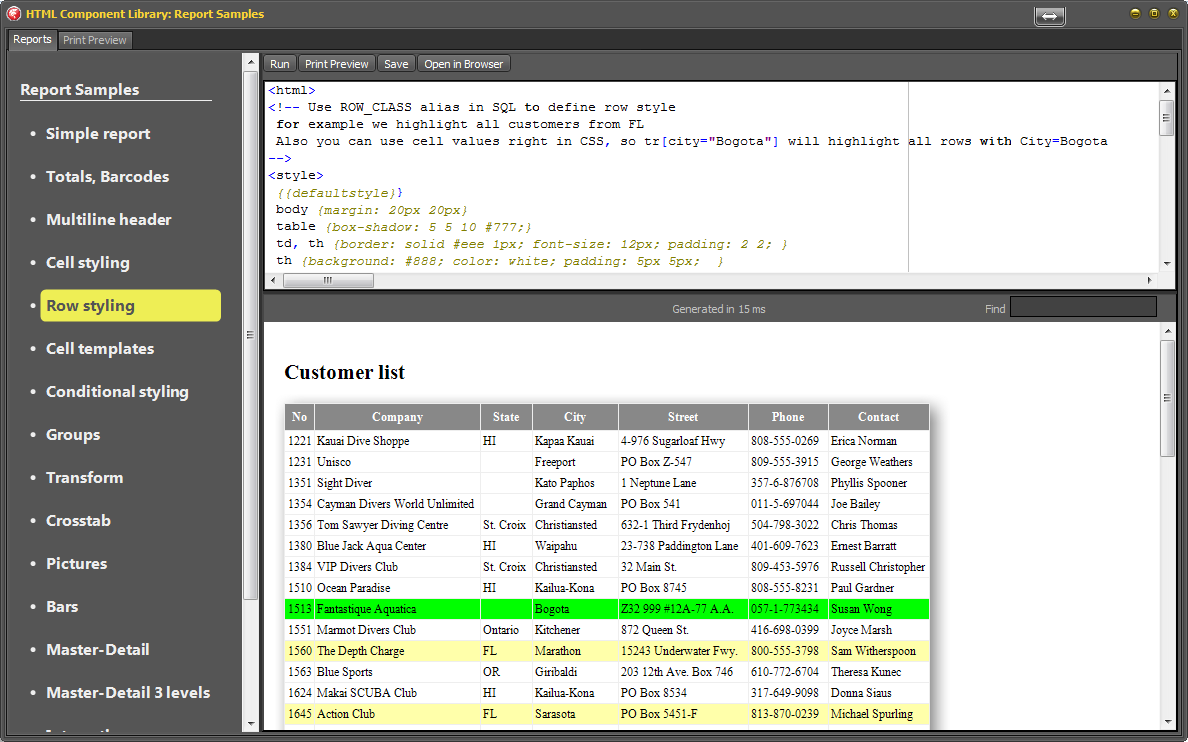
Hello World!
Hello world!Enclosing tags (<html>) are not necessary.

Templates
<animals> <animal name="Dog" color="yellow"/> <animal name="Bird" color="green"//> </animals>To the template
<html/>
{{#animals}}
<p style="color: {{color}}">{{name}}</p>
{{/animals}}
</html>
result:
dog
bird
Document-level templates are processed after special tags, so data generated during tags processing (for example, from the database using DATAPACKET tag) could be used anywhere in the report.
Template processing exclusion
Some parts of the document (for example internal DATAPACKET templates) should not be processed at the document parsing stage. For such cases, there is a special exception of mustache syntax: tags beginning with template- are not processed.Pseudo-sections and special variables
-first section is processed only at first iteration of loop
-last section is processed only at last iteration of loop
-index loop counter starting from 1
. - reference to the current context (used in cycles)
.. reference to the context of the upper level (used in cycles)
@ var - nested variable - {{ {{var}} }}
Example of logical sections
For example, we have a list of employees, some of whom have e-mails. Those names should be displayed as a link, and the rest - as a plain text. For this, data must contain a flag field with value of true or false. For example:<list> <employee name="Willis" email="bruce@hollywood.com" hasemail="true"/> <employee name="Stallone" /> </list>
template:
{{#employee}}
{{#hasemail}
<a href="{{email}}">{{name}}</a><br/>
{{/hasemail}
{{^hasemail}
{{name}}<br/>
{{/hasemail}
{{/employee}}
Result:
Willis
Stallone
Template functions
Sections can be either functions. If a name of the section coincides with the registered function, the function applies to the entire contents of the section. For example: {{#upper}} {{name}} {{/upper}} will output a variable name in uppercase. Functions are registered globally for the entire project: type THtTemplateFunction =function(s: hstring): hstring; procedure RegisterHtTemplateFunction(const Name: string; TF: THtTemplateFunction); Template function example Consider we need to display each letter of some text in a separate box. First we register the function:function CharstoRects(const s: hstring): hstring; var i: integer; begin Result:=''; for i:=1 to length(s) do Result:=Result+'<div class="charrect">'+s[i]+'</div>'; end;And set styles in report
.charrect {
display: inline-block;
width: 20px;
height: 20px;
border: solid black 1px;
padding: 2px;
text-align: center;
}
{{#charstorects}}Sample text{{/charstorects}
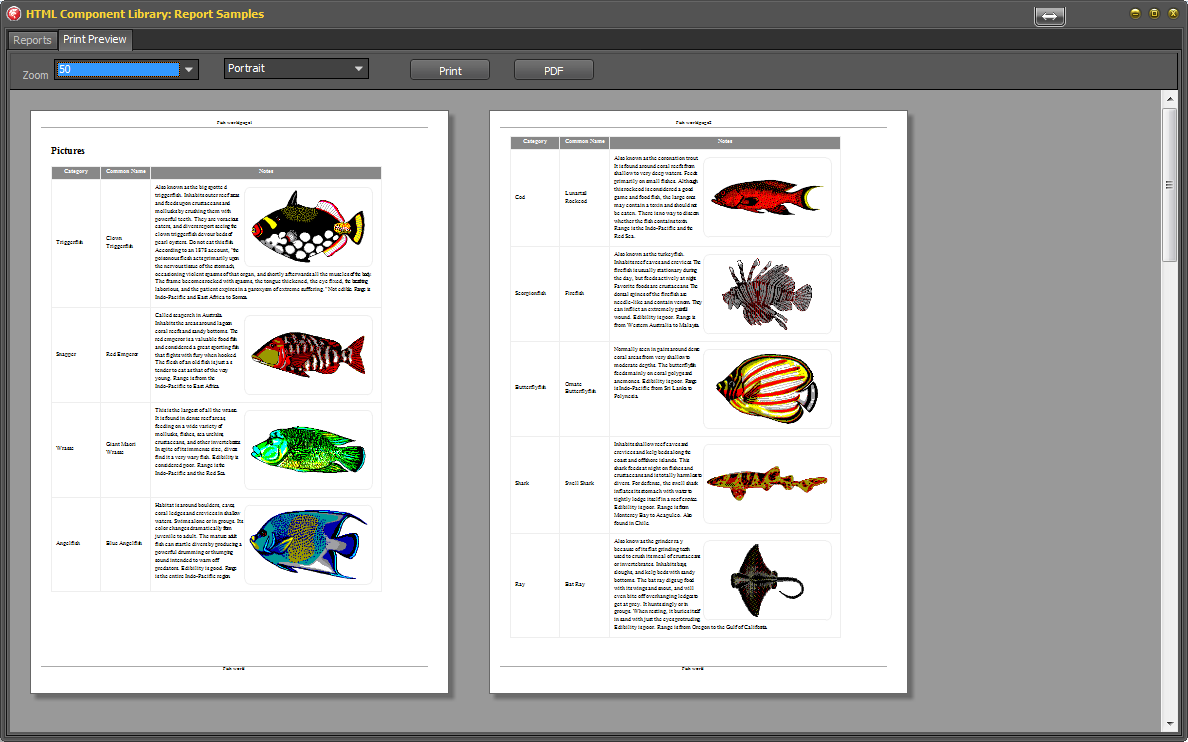
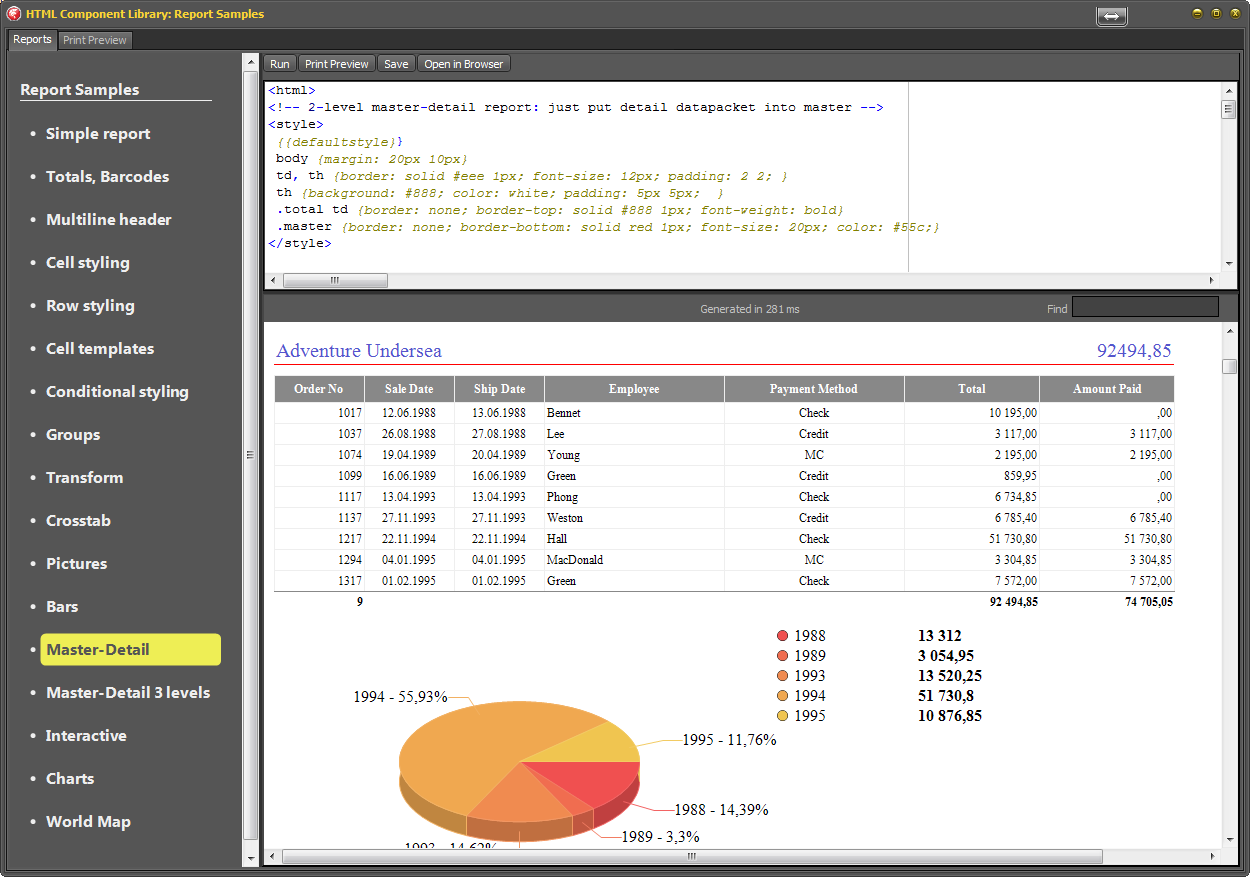 To display a page number use CSS property content: counter (page)
Standard report style declares .page class for displaying page numbers. For example
To display a page number use CSS property content: counter (page)
Standard report style declares .page class for displaying page numbers. For example
